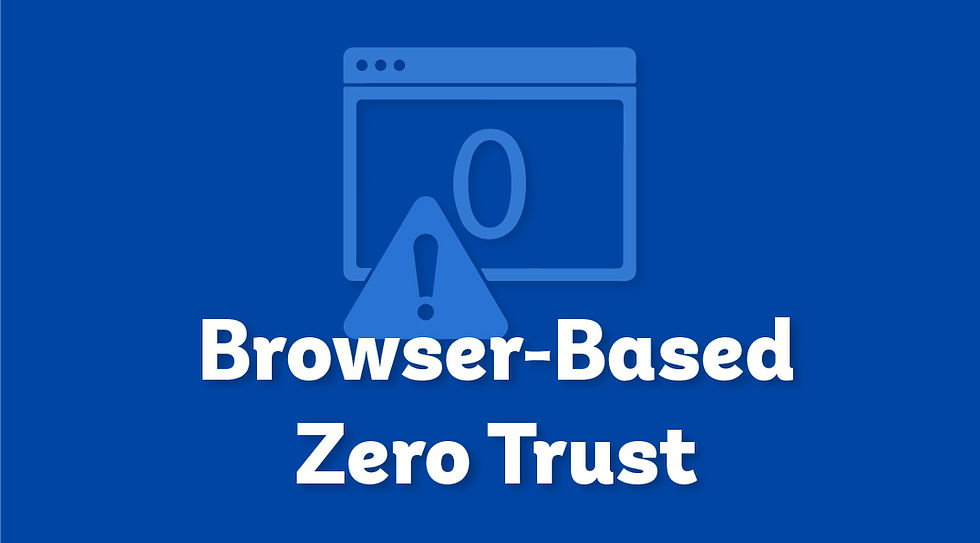Crack the Code: Understanding and Defending Against Zero-Day Vulnerabilities
- bakhshishsingh
- Jun 28
- 4 min read
In the ever-evolving battlefield of cybersecurity, few threats are as dangerous—or as misunderstood—as zero-day vulnerabilities. These silent but lethal flaws can be weaponized by cybercriminals before anyone even knows they exist, making them one of the most feared tools in a hacker’s arsenal.
To stay protected, organizations must understand what zero-day threats are, how they’re exploited, and what proactive steps they can take to minimize their risk. In this article, we unpack the reality of zero-day attacks and explore how to build a defense strategy that keeps pace with today’s invisible enemies.
What Are Zero-Day Vulnerabilities?

A zero-day vulnerability refers to a previously unknown flaw in software, hardware, or firmware that attackers can exploit before the developer becomes aware and releases a fix. The term “zero-day” stems from the fact that developers have zero days to fix the problem before it can be exploited.
These vulnerabilities are:
Unpatched and unpublicized, making them difficult to detect
Often discovered by hackers through independent research or during the reverse engineering of applications
Highly valuable, especially in underground markets where threat actors sell access to these exploits
When exploited, they can enable attackers to install malware, steal sensitive data, escalate privileges, or take full control of systems—all without detection.
How Hackers Exploit Zero-Day Flaws

Exploiting a zero-day is like slipping through a secret entrance no one else knows about. Unlike known threats that can be blocked by antivirus or intrusion detection systems, zero-day exploits are custom-crafted to evade conventional defenses.
Here’s how a typical exploitation might unfold:
Discovery: A hacker uncovers a flaw in a widely-used application or operating system.
Weaponization: They develop malicious code or payloads designed to take advantage of the flaw.
Delivery: The exploit is embedded in an email attachment, compromised website, or phishing campaign.
Execution: When the target interacts with the malicious payload, the attacker gains access—often with full privileges.
Because zero-day attacks happen before the security community is aware, they offer hackers a short-lived but powerful window of opportunity.
High-Profile Zero-Day Incidents
Some of the most damaging cyberattacks in recent history have stemmed from zero-day exploits:
Stuxnet (2010): This sophisticated worm used multiple zero-day vulnerabilities to sabotage Iran’s nuclear program.
SolarWinds (2020): Attackers inserted a zero-day backdoor into a software update, compromising U.S. government and Fortune 500 networks.
Google Chrome & Microsoft Exchange (2021): Both platforms suffered from zero-day flaws exploited in the wild, prompting emergency patches.
These incidents underscore just how catastrophic zero-day exploits can be, especially when used in state-sponsored or highly coordinated campaigns.
How Companies Are Fighting Back

Fortunately, the cybersecurity industry is not defenseless. Forward-thinking organizations are deploying a range of strategies to fight back against zero-day threats:
1. Advanced Threat Intelligence
Proactive threat hunting and intelligence-sharing communities enable organizations to spot patterns or anomalies that may indicate zero-day activity. Services such as threat feeds, dark web monitoring, and vulnerability scanning are essential components of early warning systems.
2. Rapid Patching Protocols
Speed is critical. When a vendor announces a patch for a critical vulnerability, businesses must act immediately. Automated patch management systems ensure vulnerabilities are addressed quickly before they can be exploited.
3. Security Collaborations
Tech giants like Microsoft, Google, and Apple often work with ethical hackers (bug bounty programs) and global intelligence agencies to identify and mitigate zero-day flaws. These collaborations are vital for closing security gaps before criminals can exploit them.
The Power of Detection: AI and Machine Learning

One of the most promising frontiers in zero-day defense is behavioral detection powered by artificial intelligence. Since traditional signature-based detection fails against unknown threats, AI can step in to:
Identify unusual system behaviors
Analyze traffic patterns for anomalies
Flag suspicious processes in real time
Machine learning models continuously learn from emerging threats, adapting to spot zero-day exploitation even when there’s no known signature.
Your Role in Zero-Day Defense

While zero-day vulnerabilities are complex and technical, basic cybersecurity hygiene plays a major role in defense:
✅ Keep Software Up to Date
Ensure that operating systems, browsers, plugins, and business-critical applications are always current. Enable automatic updates wherever possible.
✅ Educate Your Team
Employees should be trained to spot social engineering tactics and phishing schemes, which are often the delivery method for zero-day payloads.
✅ Implement Multi-Layered Security
Use a combination of endpoint protection, firewalls, intrusion detection systems (IDS), and behavior analytics to reduce your attack surface.
✅ Invest in Vulnerability Assessments
Regular internal audits and vulnerability assessments help you identify and mitigate risks before zero-day threats can strike.
Final Thoughts: Stay Informed, Stay Secure
Zero-day vulnerabilities represent one of the most formidable challenges in cybersecurity today. Their unpredictable nature and stealthy execution make them difficult to detect—but not impossible to prepare for.
By combining cutting-edge technology, rapid response frameworks, and user awareness, organizations can significantly lower their exposure. Working with trusted cybersecurity partners like Allendevaux can also provide the expertise needed to identify blind spots and fortify your digital infrastructure.
In the race against zero-day exploits, preparedness is your most powerful tool.




Comments